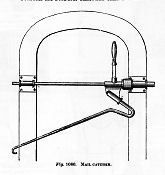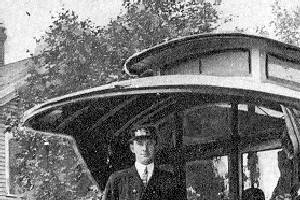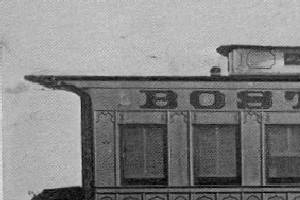I — MKing-bolt/King-pin. (See Center-pin.) Letter-board. Horizontal board or fascia extending the length of the car just below the eave line (and generally above the windows) on which the name or initials of the company owning the car are displayed. Lookout. A small cupola or upper deck in the roof of a caboose to enable trainmen to keep a lookout over the train. In the 19th century and early 20th, also used to display signals to the locomotive or to following trains.
Main Carline. (See Carline.) Miller car coupler. (also Miller Hook, Miller platform) An arrangement for coupling cars automatically, consisting of two heavy iron hooks that act as draw-bars and which are made to engage with each other by two springs when the cars come together. Miller platform.
An end platform designed by Ezra Miller and arranged so that the pulling and
pushing strains on the car are in direct line with the sills of the car. This is
generally facilitated by placing the end platform
on an extension of the car frame rather than on projecting timbers fastened
below the car body. (See also the
Miller Hook
page.) Monitor roof. (below) The earliest type of passenger car or streetcar roof with a raised clerestory or center section to let in light and/or ventilation, as opposed to a flat or arched roof. Strictly speaking, a true monitor roof is one with vertical ends as distinct from a bullnose roof or duckbill roof roof where the clerestory tapers into the platform roof.
|


